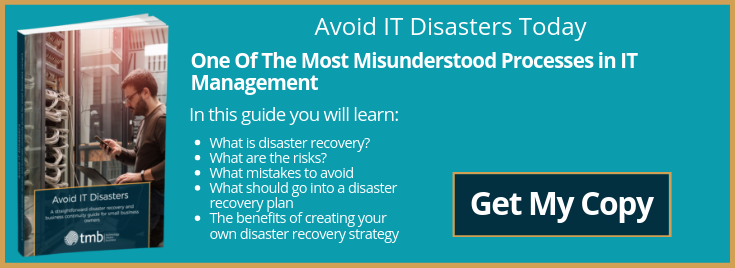4 Stages You Need To Know About For Disaster Recovery Planning
- Anthony
- June 17, 2019
- 10:33 AM
- No Comments
Disaster recovery planning involves four clear steps that can ensure a company survives an IT nightmare. Whether the problem is broken hardware or a vicious malware attack, there are ways of mitigating the risk and surviving the worst. Like stacking sandbags in the face of a flood, disaster recovery planning is crucial in the turbulent ecosystem of digital businesses. Here’s how to get it right.

Stage One: Risk Assessment
When it comes to disaster preparedness, knowledge is everything. Most of us know how to respond if a fire breaks out, because it is drilled – quite literally – into us from an early age. IT meltdowns are the 21st Century version, and risk assessment is the first step of preventing organisations from disappearing in a cloud of economic smoke. Risk assessment looks at potential hazards and establishes the likely outcomes of those hazards. This includes calculating expected downtime, costs, and the extent of the ricochet.
Stage Two: Business Continuity Planning
The goal of disaster recovery planning is to reduce the risks and overcome the hazards. In an ideal scenario, the business should be back on its feet within moments of a mishap or breach. Known as ‘business continuity,’ resuming normal functionality is something that can be planned for in advance. This includes technical elements, such as establishing which systems need to be up and running first. It also includes personnel elements, such as team members having clearly defined roles and responsibilities that they will assume in the event of a problem.
Stage Three: Implementation
Everybody knows the value of a fire drill. IT disaster preparedness is no different. If a malware attack occurs, staff need to know how to respond. Practicing in advance tests the resilience of a strategy, allowing any kinks to be identified and removed. It also means that in an emergency, there is a calm, structured response rather than chaotic panic. Practicing for disasters is an important avenue for feedback, and a crucial learning strategy.
Stage Four: Restoration
When emergencies happen, most people pick up the phone and call a professional. Whether it is the police, the fire brigade, or an ambulance, primary services are sometimes required. Disaster recovery strategies are no different, and involve companies such as TMB as frontline responders. Dedicated teams can swoop in and deep-cleanse a system if there has been a breach. Security breaches can take several weeks to restore and might require secondary actions such as replacing hardware. However, the real toll is often psychological, with employees feeling that their personal space has been violated by intruders. If the worst does happen, it helps to have trained professionals in place to ensure a feeling of security is restored.
Find Out More
At TMB, we always offer an informed, personalised approach. For more information about designing a bespoke disaster recovery strategy, request a call back through our online contact form.
Image source: Pixabay

